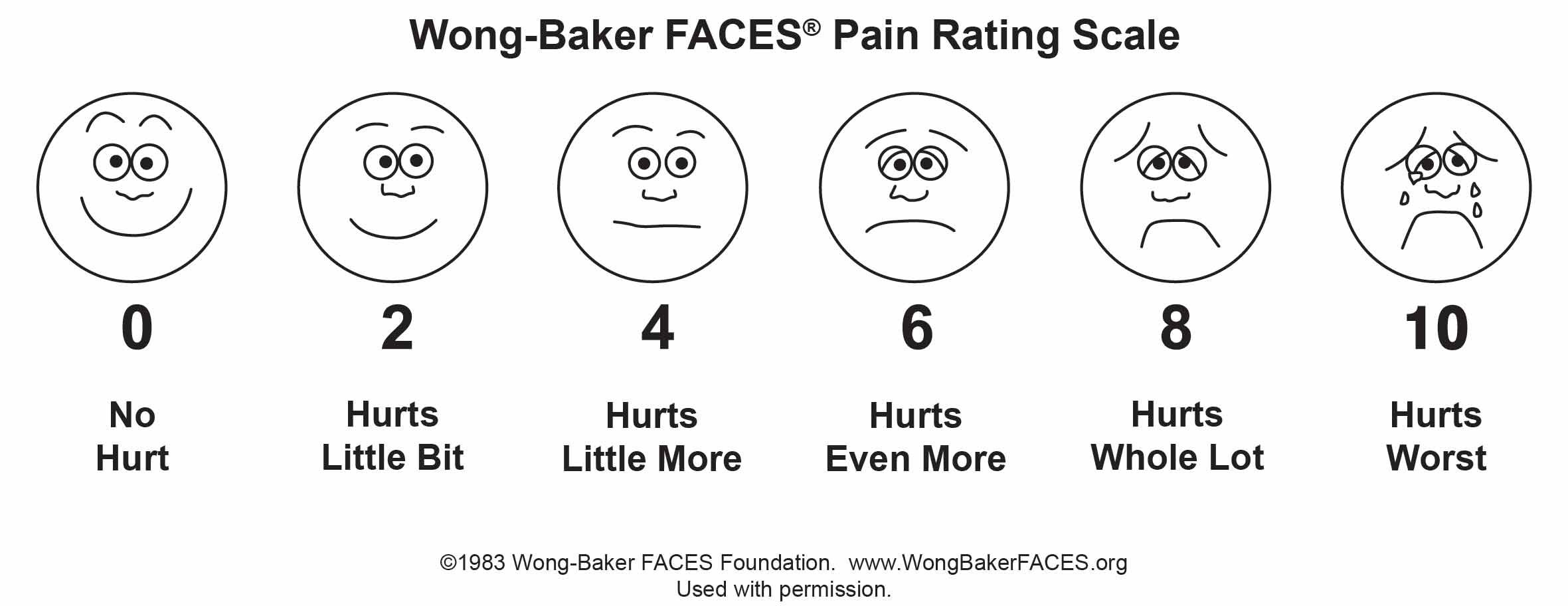
Pain after birth
Pain after birth
Somali: Xanuunka ka-dib dhalmada
You are the only person who can accurately describe your pain. Your nurse will ask you to rate your pain on a scale from zero (no pain) to 10 (worst pain) during your hospital stay. (See the pain scale below.)
The goal is to keep your pain between a three to four, which is considered to be between "hurts a little bit" and "hurts a little bit more."
You will have some pain, which is to be expected. Your health care team will help you manage your pain so you can have the best results during your recovery.
- If you had a vaginal birth with an episiotomy or a tear, you may choose to use ice packs to help control the pain. You may have pain medicine (by mouth) to help with the cramping that happens as the uterus begins contracting (shrinking) to its nonpregnant size. Talk with your nurse if you don't think your pain is being treated effectively.
- If you had a Cesarean birth, you will receive pain medicine through your IV until you can take pain medicine by mouth. The goal is to keep your pain level between a three to four. Within eight hours after surgery your nurse will help you get out of bed and walk around the room. Gas pains are common after surgery and walking will help relieve those pains.
Watch a series of short videos on how to manage pain before, during and after birth (for both vaginal and Cesarean birth).
Related resources
Source: Allina Health Patient Education, Beginnings: Pregnancy, Birth and Beyond, eighth edition, ob-ah-90026
Reviewed By: Allina Health's Patient Education Department experts
First Published: 10/04/2002
Last Reviewed: 12/06/2021
